“Connected aircraft” are aircraft where existing sensors on the belly of the plane are connected to the AST SafeScan™ Surface Management System. SafeScan utilizes proprietary software scripts installed on these connected aircraft to collect data during landings and transmit data to AST upon completion of the landing rollout. When these aircraft encounter friction-limited braking, SafeScan uses the experienced friction coefficient at the friction limit to assign the appropriate braking action description, as per FAA AC 25-32, which defines the range of wheel braking coefficients corresponding to each RCAM category. Conditions are reported using standard TALPA nomenclature: Dry, Good, Good to Medium, Medium, Medium to Poor, Poor, and Nil. All reports are de-identified and provide only the specific airport, runway, landing time, meteorological conditions, and experienced friction; consistent with FOQA standard practices, no data from airplane landing files, flight numbers, tail numbers, or airplane types are reported.
Users can access this information via SafeScan reports or through their existing information systems – no extra user interface is required. The latter is accomplished by integrating the data using AST’s Applied Program Interface. Reports are available in multiple formats and are color coded for quick and easy interpretation. Users can select airports of primary interest (high traffic, feeder, diversion, etc.) to customize their view of recent landings and fit their situational awareness and decision-making needs.
Users also have the option to set up customizable alerts to have SafeScan notify them when a braking action description below a certain threshold is reported. Users can set the relevant threshold, select airports of interest for alert generation purposes, and specify e-mail, SMS, or both as the delivery mechanism.
In 2016, AST completed a Feasibility Study with the Federal Aviation Administration (FAA). It was published as Broad Agency Announcement DTFACT-13-R-00009, entitled “Determining Runway Friction Conditions in Real Time Using Data Obtained from Airplanes during Landing Rollout.” The project was successfully completed for the FAA in May, 2016.
Our computational model has been proven in operational modes over the past twelve years, with 13+ million landings already recorded. It’s being used by dozens of major airlines and airports today.